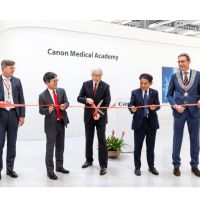In a ECR 2024 session chaired by European Federation of Radiographer Societies (EFRS) Past President Charlotte Beardmore (UK) and David Sipos (Hungary), lectures focused on the most successful strategies to solve radiographer staffing issues, and allow radiographers to adapt to recent changes and build resilience. Carst Buissink (Netherlands) underlined the differences between generations, and the need to appreciate the disparities when developing training materials to engage with younger professionals. Virtual reality and simulation can be of use to build up competency, while serious games are needed to cover soft skills education.
Safe staffing ratios/quality and safety workload, the need for a framework for radiographers
Diego Catania (Italy) underlined the importance that radiology management solutions gained in the healthcare sector after the COVID-19 pandemic. The irruption of new technologies, coupled with the ongoing need of high quality and safety workload led to facing new challenges: staff shortages, increasing demand, workflow Issues, technology management.
Radiographers shortage is a current problem in hospital radiology departments, with an average current vacancy rate of 13,4 % in the UK and up to 25% in Italy. Such figures bring concern regarding health and safety for workers and patients, with the radiographers facing risks of attrition, burnout and work-related stress. To improve retention we need to understand the factors influencing the decision of radiographers to leave the profession, segmented into three categories:
- Working patterns and the impact on employee health and wellbeing
- Unreasonable and increasing workload pressures
- Physical demands, particularly shift working and repetitive work
- Burnout and mental health demands
- Lack of flexibility in working terms and conditions
- Lack of additional earning potential beyond basic pay
- Limited opportunity for flexible working, including part time, flexible hours, shorter shifts and term time working.
- Timely career progression, access to continuous professional development (CPD) and the need to feel valued
- Limited opportunities for progression
- Limited opportunities for CPD underpinned by insufficient funding and staffing
- Perception that skills and knowledge not exploited or appreciated
Even after setting financial policy questions aside, few mechanisms for responding to staff shortages remained:
Improving the overall work environment | |
| Four main themes emerged: Interpersonal relations, support from colleagues, departmental policies and learning. |
| Expanding radiology training programs | |
| In addition to improving retention, accelerating the upskilling of new radiographer bears an important role, and new innovations like VR should be leveraged when refreshing training materials. | |
| Adopting new technologies | |
| On top of training needs, new technologies can also play a role more directly. Remote scanning for example, could alleviate shortages and help improve access in more isolated geographies. |
In order to activate those mechanisms, and assess precisely staffing needs, a seven-step global framework is of crucial importance:
- Establishing the staffing purpose and focus
- Collect basic data
- Determine available working time
- Develop a task or activity list
- Assign an activity time and frequency of occurrence to each activity
- Determine the (workload and) required Fulltime equivalents
- Analyse and interpret the results
Solving retention issues for radiographers: a multifactorial approach
With 28% of NHS radiographers likely to leave before retirement, the situation is important and will affect quality of care. Patrick Vorlet (Switzerland) offered in his lecture an emphasis on the need to appreciate the potential role of national bodies and the European Federation of Radiographer Societies (EFRS) in providing an environment to support retention.
Actions can be implemented by management teams: Education, organisation, Control / monitoring, Innovation and fulfilment. Radiographers themselves can help by reporting problems to management, suggesting solutions and participating in opportunities for change.
As for the potential role of national bodies and the EFRS in providing an environment to support retention, several actions can be undertaken:
- Political lobbying to push for salary revisions, compensation for irregular working hours and the implementation of non-stop nurseries in hospitals.
- Collaboration with patient associations through surveys and development projects
- Skills development by collaborating with universities and health organisations
- Data monitoring to offer insights and dashboards measuring vacant positions, number of Bachelors delivered against estimated future needs, and Physical-Organisational-Psychosocial (POP) indicators such as intention to leave, leaving rate, absence due to illness, job satisfaction and subjective workload.
Current context for radiology is complex, and the remedial tools and actions are difficult to implement, but quality of care is at stake, as well as the collective professional well-being, so there is no other choice than to partner with presidents, managers and radiographers, to nurture a sense of meaning and recognition at work and co-create solutions to increase well-being and efficiency.



























